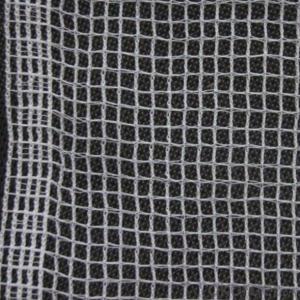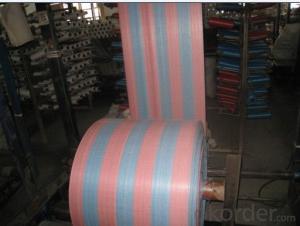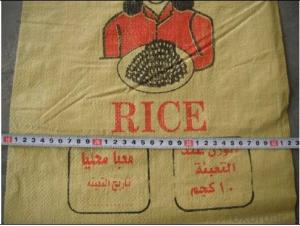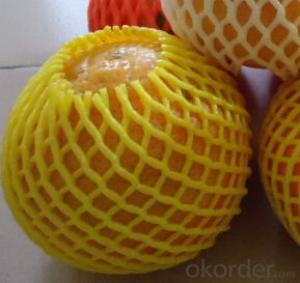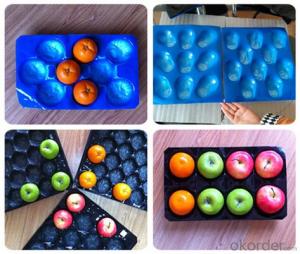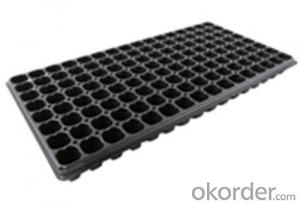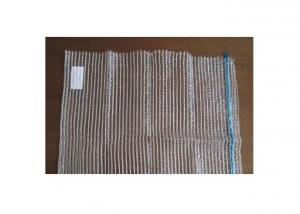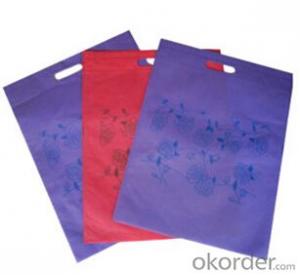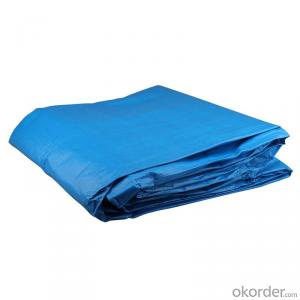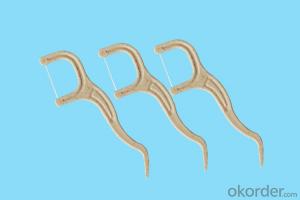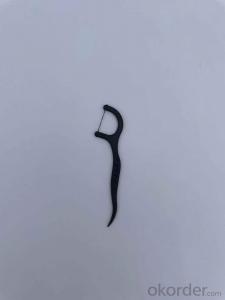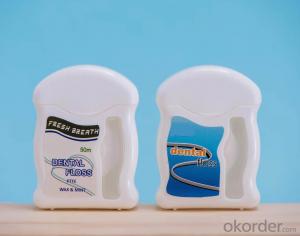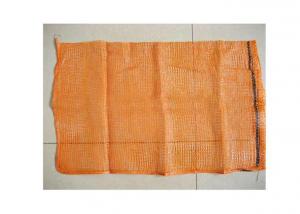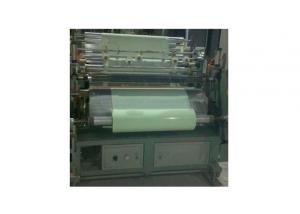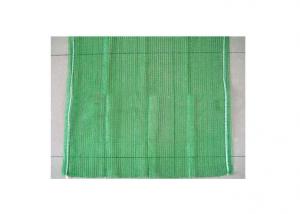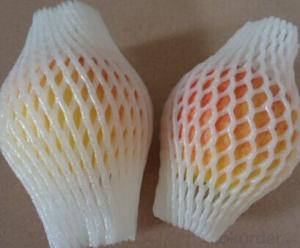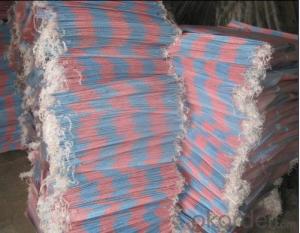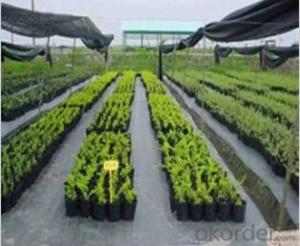EPE Fruit Protection Net For Various Fruits
- Loading Port:
- Qingdao
- Payment Terms:
- TT OR LC
- Min Order Qty:
- 100000 pc
- Supply Capability:
- 100000000 pc/month
OKorder Service Pledge
OKorder Financial Service
You Might Also Like
Introduction of EPE Fruit Protection Net For Various Fruits:
For fresh food( such as apple, peach, pomegranate, melon, watermelon persimmon) and bottle packaging
Application of EPE Fruit Protection Net For Various Fruits:
1. It is mainly used as the package of the fruits in growing season and in supermarket.They can protect the surface of the fruits avoiding any damages in transit and during period of display in sales field.
2.To provide best protection for the fragile cargoes such as Glassware ,Ceramics and Electronic components,etc. the comprehensive protection can put cargoes in safer situation in transit , decrease the damage rate to the minimum.
Specifications of EPE Fruit Protection Net For Various Fruits:
1.Material: EPE
2.Size: any size is available
3.Weight: according to the product you want to pack
4.Color: white, pink, red, green yellow ( according to your requirement)
5.Food class
Pictures of EPE Fruit Protection Net For Various Fruits:
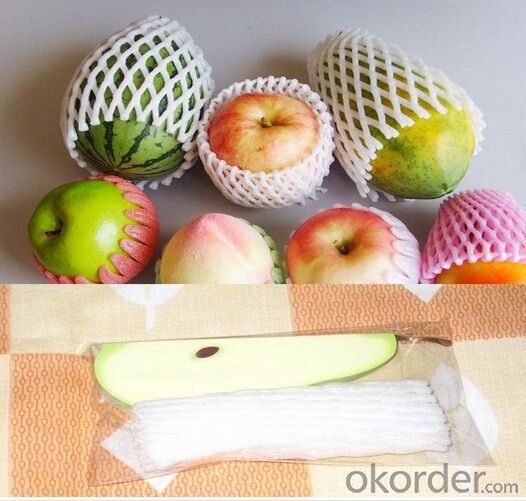
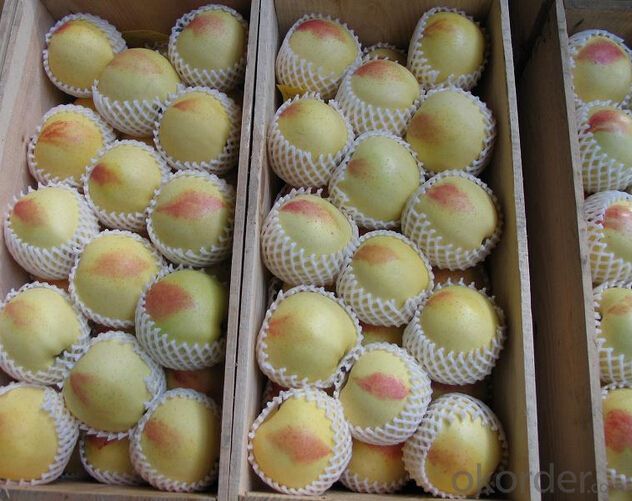

FAQ:
How to custom?
1. Please send your detailed requirements to me, Such as size, material, color, weigh, quatity or design.
2. I will make design for you according your requirements if you do not have design.
3. Once the design was confirm, The offer will send to you soon.
4. After price was confirmed, I will make Proforma invoice to you and ready to make
samples for you check.
5. After samples was confirmed, We will arrange the order production upon receipt of confirmed PI and your deposit.
6. After the goods is ready to ship, We will informs you the shipping date and other
detailed information.
7. We will help to track the goods until you receive it
- Q:How are plastic hoop houses beneficial in season extension?
- Plastic hoop houses are beneficial in season extension as they create a controlled environment that protects plants from harsh weather conditions, such as frost, wind, and excessive heat. The plastic covering acts as a barrier, trapping heat and maintaining a stable temperature, allowing plants to thrive and extend their growing season. Additionally, plastic hoop houses also protect crops from pests and diseases, providing a more favorable growing environment, resulting in increased yields and prolonged harvests.
- Q:How do agricultural plastic products improve crop pollination?
- Agricultural plastic products, such as plastic row covers and tunnels, can improve crop pollination by creating a controlled environment that enhances pollinator activity. These plastic covers protect plants from harsh weather conditions, pests, and diseases, which can negatively impact pollinators. Additionally, the plastic structures help trap heat, creating a microclimate that encourages earlier flowering and longer blooming periods, attracting more pollinators. By providing a sheltered and favorable environment, agricultural plastic products support and promote the vital role of pollinators in crop production.
- Q:The plastic plants from dollar tree are they usable in my aquarium???
- I did not find family dollar store fish tank products on-line but if the items you are interested in are in the pet department then I would say yes they are made for terrariums and aquariums..Just remember to clean the plants whenever you change the water and clean the rest of the tank.keep their environment as clean as possible. Peace
- Q:How do you control pests and diseases in ground cover plants?
- There are several methods to control pests and diseases in ground cover plants. One approach is to regularly inspect the plants for any signs of pests or diseases, such as discolored leaves or insect infestations. If detected, the affected plants should be promptly removed and disposed of to prevent the spread of pests or diseases. Another method is to ensure proper sanitation practices, such as regularly cleaning the garden area and removing any debris or dead plant material that may harbor pests or diseases. Additionally, practicing good cultural practices, such as providing adequate water and sunlight, can help promote plant health and reduce susceptibility to pests and diseases. In some cases, organic or chemical insecticides or fungicides may be used as a last resort, following proper instructions and precautions.
- Q:How do nursery trays assist in the propagation of rare and endangered plant species?
- Nursery trays assist in the propagation of rare and endangered plant species by providing a controlled and protected environment for their growth. These trays allow for the efficient use of space, resources, and labor, making it easier to propagate a larger number of plants. Additionally, nursery trays provide optimal conditions such as proper drainage, moisture control, and protection from pests and diseases, which are crucial for the successful germination and development of rare and endangered plant species.
- Q:How do you protect ground cover plants from winter damage?
- There are several ways to protect ground cover plants from winter damage. One common method is to apply a thick layer of mulch around the plants to insulate the roots and protect them from freezing temperatures. Another approach is to use frost blankets or row covers to create a protective barrier over the plants. Additionally, pruning the plants in late fall can help remove any dead or damaged foliage, allowing for healthier growth in the spring. Finally, avoiding excessive foot traffic or heavy equipment on the ground cover plants during winter can prevent damage to their delicate structures.
- Q:What types of plastic materials are used in agricultural films?
- Several types of plastic materials are commonly used in agricultural films, including low-density polyethylene (LDPE), linear low-density polyethylene (LLDPE), high-density polyethylene (HDPE), and ethylene-vinyl acetate (EVA). These materials offer various properties such as flexibility, durability, and resistance to UV radiation, making them suitable for different agricultural applications such as greenhouse covers, mulch films, and silage bags.
- Q:How do you prevent ground cover from taking over the entire garden?
- One way to prevent ground cover from taking over the entire garden is by regularly maintaining and controlling its growth. This can be done through regular pruning, trimming, and pulling out any excessive or unwanted spreading shoots. Additionally, creating physical barriers, such as edging or bordering, can help to contain the ground cover within its designated area. Regular monitoring and prompt action can effectively prevent ground cover from overtaking the entire garden.
- Q:How are plastic poultry crates beneficial in transportation of poultry?
- Plastic poultry crates are beneficial in the transportation of poultry for several reasons. Firstly, they provide a safe and secure environment for poultry during transit, preventing injuries and minimizing stress. Secondly, the crates are lightweight and stackable, allowing for efficient use of space and easy handling. Additionally, the plastic material is durable and easy to clean, ensuring a hygienic transport environment for the poultry. Overall, plastic poultry crates contribute to the smooth and efficient transportation of poultry, ensuring their well-being and quality upon arrival.
- Q:How do you choose ground cover that tolerates clay soil?
- When choosing ground cover that tolerates clay soil, it's important to consider a few key factors. Firstly, look for plants that have a preference for clay soil or are known to thrive in heavy, compacted soils. Some examples include creeping phlox, creeping thyme, and sedum. Additionally, consider plants with deep root systems that can break through the clay and improve drainage. Lastly, consult with local nurseries or gardening experts who can provide specific recommendations based on your region's climate and soil conditions.
1. Manufacturer Overview |
|
|---|---|
| Location | |
| Year Established | |
| Annual Output Value | |
| Main Markets | |
| Company Certifications | |
2. Manufacturer Certificates |
|
|---|---|
| a) Certification Name | |
| Range | |
| Reference | |
| Validity Period | |
3. Manufacturer Capability |
|
|---|---|
| a)Trade Capacity | |
| Nearest Port | |
| Export Percentage | |
| No.of Employees in Trade Department | |
| Language Spoken: | |
| b)Factory Information | |
| Factory Size: | |
| No. of Production Lines | |
| Contract Manufacturing | |
| Product Price Range | |
Send your message to us
EPE Fruit Protection Net For Various Fruits
- Loading Port:
- Qingdao
- Payment Terms:
- TT OR LC
- Min Order Qty:
- 100000 pc
- Supply Capability:
- 100000000 pc/month
OKorder Service Pledge
OKorder Financial Service
Similar products
New products
Hot products
Hot Searches
Related keywords




